Learn how to turn a glut of fresh fruit and vegetables into wonderful preserves to see you through till next summer. Words and photos by Mario Matassa
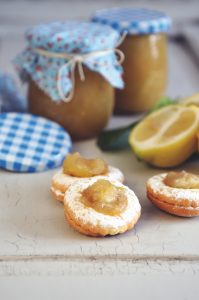 Italians love to preserve. It seems that every day of the summer just takes them one step closer to the day when the whole family will gather in the back garden for the annual passata fête. It’s a big day on the family culinary calendar, one of those national events that speaks of childhood memories with nonno in the vegetable garden picking the ripest tomatoes, while nonna is at the stove hovering over a cauldron of gently simmering tomato sauce, mamma is diligently peeling a mountain of tomatoes with her closest friends, and papà is stood by a smouldering grill with a glass of wine in one hand and a spatula in the other.
Italians love to preserve. It seems that every day of the summer just takes them one step closer to the day when the whole family will gather in the back garden for the annual passata fête. It’s a big day on the family culinary calendar, one of those national events that speaks of childhood memories with nonno in the vegetable garden picking the ripest tomatoes, while nonna is at the stove hovering over a cauldron of gently simmering tomato sauce, mamma is diligently peeling a mountain of tomatoes with her closest friends, and papà is stood by a smouldering grill with a glass of wine in one hand and a spatula in the other.
For Italians, preserving was once a necessity, a means of ensuring that there would be enough to feed the family over the lean winter months. Today, albeit no longer a necessity, the enthusiasm, traditions and the skills hold strong. From early August through to late September supermarkets and local shops all stock a wide range of preserving jars, a sure sign that it’s time to get out your scales, stainless steel pans and funnels, and start preserving.
There are obvious reasons why Italians like making preserves. There’s the assurance that comes with knowing the provenance of what’s in the jar. Moreover, preserves generally offer a healthy option, with fresh produce used at its very best and without the help of chemical preservatives. It’s economical, of course, to make use of cheap, seasonal foods, especially when there are gluts of certain fruits and vegetables. Many Italians tend to an orto, vegetable garden, over the summer and will deliberately grow more than they require, the excess being preserved to stretch through to the following summer. But even those without a garden can be spotted by the roadside, wicker basket in one hand, a handful of blackberries, wild strawberries or whatever happens to be in season in the other.
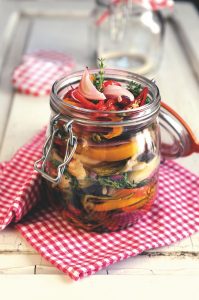 Of course, while homemade jams, chutneys and pickles offer an economical option, the fact is that ultimately the majority of Italians take the trouble because something preserved at home is always going to taste better than a shop-bought variety. The natural flavours, aromas, colours and textures are evident the moment a jar is unsealed. Every Italian family with a cantina laden with preserves will have a secret list of recipes handed down from one generation to the next. And every family will swear that their preserves are like no other.
Of course, while homemade jams, chutneys and pickles offer an economical option, the fact is that ultimately the majority of Italians take the trouble because something preserved at home is always going to taste better than a shop-bought variety. The natural flavours, aromas, colours and textures are evident the moment a jar is unsealed. Every Italian family with a cantina laden with preserves will have a secret list of recipes handed down from one generation to the next. And every family will swear that their preserves are like no other.
It’s a feeling of accomplishment, one that always manages to evoke fond memories of childhood and warm summer days.
Verdure piccanti (spicy vegetables)
The spicy vegetables recipe below is an excellent way of using up your surplus summer produce. It is very similar to the classic giardiniera, although that is usually preserved in vinegar, whereas this particular recipe uses oil. I personally prefer this version; the milder flavour of the oil makes it suited to a wider variety of uses in the kitchen. I’ve used this preserve as a condiment for pasta, to accompany roast or boiled meats, and in many other situations besides. It’s also excellent simply served with green salad, a tomato, a piece of cheese and some bread – a Mediterranean version of a ploughman’s lunch, if you like. Once you’ve mastered the technique, the vegetables you use are purely a question of taste as winter and autumn vegetables work just as well.
Click here for the recipe
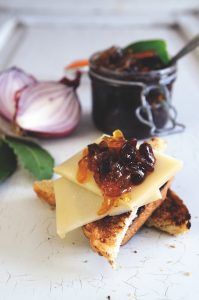 Cipolle (onions)
Cipolle (onions)
Onions, cipolle, are grown throughout Italy and there are a great number of different varieties. Among the most prized are the cipolla rossa di Tropea (grown in Calabria), the cipolla di Certaldo (from Tuscany), the cipolla di Giarratana (Sicily), and cipolla rossa di Acquaviva (Puglia). Of these, the red Tropea onion from Calabria is considered by many to be the very best here in Italy. It is delicious chopped and added to a salad but it also cooks very well, holding its form, texture and colour. I find a sweet onion works very well in this jam, but ultimately it’s a question of preference.
Click here to make Mario’s onion jam
Limoni (lemons)
Lemons are highly valued in Italy and have many uses in the kitchen. They are also a favourite when it comes to preserving. Three types of lemon in particular hold protected status and are highly prized: lemons from the Amalfi coast, the Gargano lemon from Puglia, and Sorrento lemons. Lemons have an added bonus in that they are harvested three times over the course of the year, in the early winter around October time, during the spring in March, and during the early summer in June. This means that good-quality fruit can be found almost all year round. The organic, non-treated varieties are best. For jam-making, choose a variety that has a thin skin with not too much pith, as this can give the jam a slightly bitter taste.
Mario’s delicious lemon marmalade recipe is here
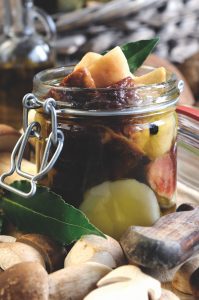 Funghi (mushrooms)
Funghi (mushrooms)
Italians love mushrooms, especially porcini. A fresh porcino mushroom should be firm to the touch, and the stem should be a clean white or a light cream colour. A greenish brown colour under the cap suggests that the mushroom is less than fresh. If you can’t find porcini, try a mix of button and chestnut mushrooms.
If you want to try preserving mushrooms, here’s a great recipe
Peperoncini farciti (stuffed peppers)
This is a classic Italian appetiser made throughout Italy. Like passata, it’s one of those preserves where every Italian thinks they hold the secret key. The technique, in most cases, is broadly the same, the real debating point focusing on matters of filling. Some people recommend adding olives instead of the capers, whereas others will place half an olive over the top of the pepper to seal the filling inside. As an alternative to fish, others fill the peppers with a cheese mixture. Do not be tempted to use scotch bonnets or any similar type of pepper – they’re simply too hot! Use round smooth-skinned peppers instead. These peppers can be eaten on their own as an appetiser or, more commonly, with mixed cured meats, preserved artichokes and cheese as part of a classic antipasto.
Here’s Mario’s stuffed peppers recipe
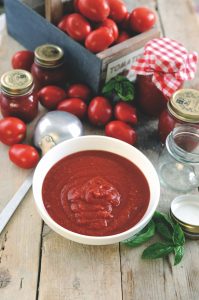 La Passata (passata)
La Passata (passata)
Although there are multiple brands of passata available in supermarkets and Italian speciality shops, none of them can compare to the homemade version. Every Italian will have an opinion on how to make the perfect passata. Even the basics are hotly disputed. Although the majority will agree that the plum tomato is best suited to the job, some will use the beefsteak tomato. The key is to find a tomato that has fewer seeds and lots of flesh. There are also endless techniques for making passata, but this version has always served me well. Start with the basic technique and then you can experiment. Stored properly, passata will easily last for more than a year.
Here’s our passata recipe
